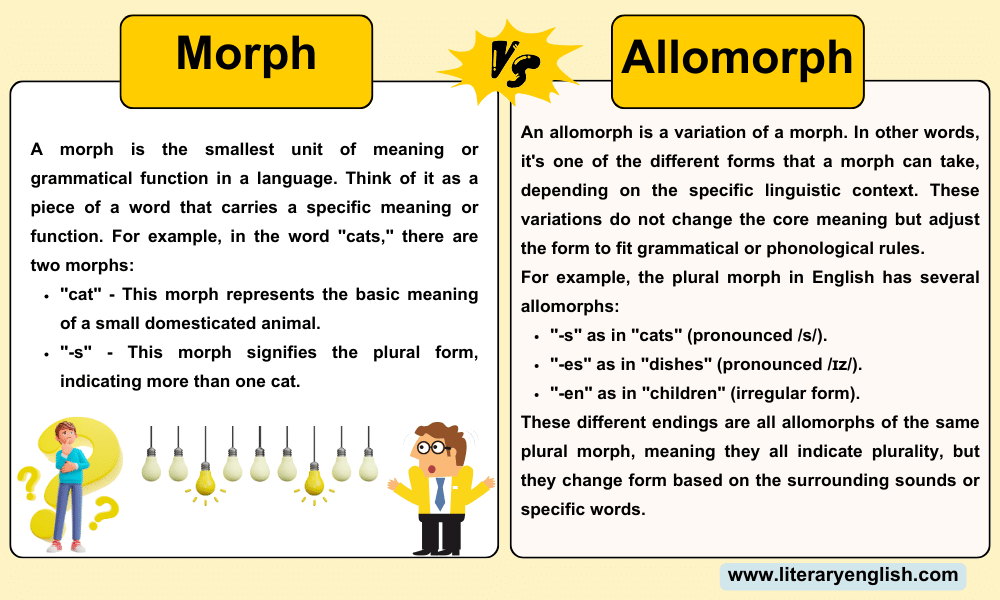Morphology is the branch of linguistics that deals with the structure and form of words. “Morph” and “allomorph” are the subjects of morphology. Here is a detailed explanation of the difference between these two terms, in context of linguistics studies.
Morph
A morph is the smallest unit of meaning or grammatical function in a language. Think of it as a piece of a word that carries a specific meaning or function. For example, in the word “cats,” there are two morphs:
“cat” – This morph represents the basic meaning of a small domesticated animal.
“-s” – This morph signifies the plural form, indicating more than one cat.
Morphs can be free or bound:
Free morphs can stand alone as words (e.g., “cat”).
Bound morphs cannot stand alone and must be attached to other morphs (e.g., “-s”).
Allomorph
An allomorph is a variation of a morph. In other words, it’s one of the different forms that a morph can take, depending on the specific linguistic context. These variations do not change the core meaning but adjust the form to fit grammatical or phonological rules.
For example, the plural morph in English has several allomorphs:
“-s” as in “cats” (pronounced /s/).
“-es” as in “dishes” (pronounced /ɪz/).
“-en” as in “children” (irregular form).
These different endings are all allomorphs of the same plural morph, meaning they all indicate plurality, but they change form based on the surrounding sounds or specific words.
|
Plural morpheme |
Allomorphs |
|
{e(s)} |
/ɪz/ in the case of words ending in /s/, /z/, /ʃ/, /ʒ/, /tʃ/, /dʒ/ e.g., buses /bʌsɪz/, vases /vɑː zɪz/, bushes /bʊʃ ɪz/, rouges /ruː ʒɪz/, churches /tʃɜː tʃɪz/, judges /dʒʌdʒɪz/ |
|
/s/ in the case of words ending in a voiceless consonant (other than /ʃ, s, tʃ/): cats /kæts/, caps /kæps/
/z/ in the case of words ending in voiced sounds (other than (/z, ʒ, dʒ/): boys /bɔɪz/, bags /bæɡz/ |
Key Differences Between Morph and Allomorph
A morph is a specific segment of a word that carries meaning or a grammatical function. While, an allomorph is a variation of that segment, different forms a morph can take.
“-s” in “cats” is morph, and”-s” in “cats” (/s/), “-es” in “dishes” (/ɪz/), “-en” in “children” are allomorph
Morphs are the building blocks of words. Allomorphs show how those blocks can vary in form to fit different linguistic environments.
Understanding the difference between morph and allomorph helps in grasping how words are structured and modified in different contexts, which is fundamental in the study of languages and their grammar.
